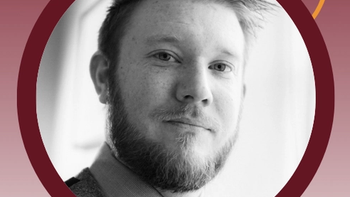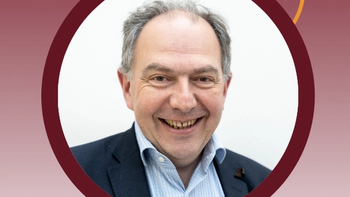
- Applied Clinical Trials-12-01-2017
- Volume 26
- Issue 12
The ‘What Ifs’ of EMA Relocation Decision
With the literal toss of a coin officially sending the EMA to Amsterdam post-Brexit, it's worth reflecting on what might have been if the decision went differently.
All attention is now focused on Amsterdam and how the transition will work for the European Medicines Agency (EMA) as it relocates there over the next 16 months. But because the final decision emerged from a mere toss of a coin, after so much energetic lobbying and intense planning, it is not out of place to reflect for a moment on the what-might-have-been if the decision had gone a different way.
The rich variety of glossy brochures and videos and picture-laden websites that the candidates produced to back their bids are now nothing more than trash scattered along the European wayside. But they offer a glimpse of other futures, other lives, other possibilities-the what-might-have been for tens of thousands of Europeans linked to the world of pharmaceuticals. The choice of a new site for the agency affected not only the hundreds of staff of the agency and their families, but also the academics, researchers, officials, industry executives, and representatives of patients and health professionals representatives who are professionally obliged to spend much of their lives in and around and on their way to and from the agency.
Of course, much would have been the same wherever the choice had fallen: an office building, meeting rooms and hotels, an airport, the minimum services of a big city-the almost universal claims to be “the best country to host the EMA” effectively cancelled each other out. So, too, did the standard promises that EMA officials and families and visitors could enjoy an “international spirit,” a “thriving artistic and cultural environment,” or “a unique food scene.” But on many of the formal criteria, the differences perceptible through the optimistic tone of the respective public relations exercises were often stark.
Accessibility-a key consideration for the 36,000 journeys a year made by experts attending meetings at the agency-varied widely. The conclusions were all too obvious that could be drawn from, say, Barcelona’s connectivity (“the 7th busiest airport on the continent” with “direct flights throughout Europe”) or Bonn’s “three international airports in close proximity and links to major European roads and rail routes,” compared with Zagreb’s offer (of “regular bus lines connecting it to all parts of Croatia but also to many European cities and towns”). Lille based its appeal on being “the nearest European city to London” and “less than 35 minutes from Brussels.” Curiously, Milan tried to bolster its appeal by providing travel details that showed that Vienna could be reached in 13 hours!
The cost of living and of operating the agency featured frequently in the bids. Bucharest described itself as “cost-effective.” But EMA families could have enjoyed even greater spending power in Zagreb, which boasted of being “the cheapest capital in the EU.” Bratislava emphasized its “lower operating costs,” and Brussels tried to score points on the economic front, too, arguing that “the proximity of EU institutions reduces travel expenses.”
The facilities offered ranged from the sublime to the basic. “Hospitality” was brandished as “part of the Athens daily routine,” and its proposed office location offered “shopping malls, amusement parks, and multiplex cinema theaters,” as well as “close proximity to the Piraeus port and the Athens seafront riviera.” Bucharest’s more austere bid noted “on-site amenities such as bank branches, a pharmacy, a supermarket.”
Other distinctions emerged in quality-of-life amenities, such as the proximity of “Italian art cities, the Alps and the Mediterranean coast” that Milan promised, or Bucharest offering “the Carpathian Mountains, the unique Danube Delta, and the impressive Black Sea” just two hours away by car.
Geography and climate also featured prominently in bids: Malta “at the crossroads of the Mediterranean,” with “300 days of sunshine a year” vied with the “excellent climate” of Barcelona. Porto substantiated its bid with the observation that “being the westernmost country in Europe, with the same time zone as the UK, Portugal has a privileged geographic location to act as an intercontinental platform, bridging the gap between Europe, America, and Africa.” And both Zagreb and Brussels claimed to be at “the heart of Europe.”
Some of the claims were highly individualistic-if sometimes of questionable relevance. Stockholm threw in the fact that the Nobel Prize is based in Sweden. Malta flaunted the contribution made to quality, safety and efficacy of medicines by “the Holy Infirmary of the Knights Hospitaller of Saint John over four hundred years ago.”
As it is, Amsterdam will be the host city-and the resentment that flared up among many losing candidates may in time be tempered by the reflection of the agency’s boss, Guido Rasi, speaking on the day after the decision was made. A coin-toss between a good candidate and a bad one would have been undesirable as a way of making the decision, he conceded. But the coin-toss between candidates of broadly similar merit was not an unreasonable approach, he said. After all, for him, and for pharma executives everywhere, what matters most is not the city, but how far the agency’s operations keep running smoothly.
Peter O'Donnell is a freelance journalist who specializes in European health affairs and is based in Brussels, Belgium
Articles in this issue
about 8 years ago
What Can You Do to Prevent Clinical Trial Fraud?about 8 years ago
Addressing Administrative and Adherence Burdens in Clinical Trialsabout 8 years ago
Anticipating the Groundswell of RWD and RWE Usageabout 8 years ago
M&A, FDA Top List of 2017 Happeningsabout 8 years ago
Improving the Traceability of the Clinical Trial Supply Chainabout 8 years ago
Site Perspectives on Clinical Trial Qualityabout 8 years ago
Salary and Satisfactionabout 8 years ago
CDISC Glossary of Clinical Research TerminologyNewsletter
Stay current in clinical research with Applied Clinical Trials, providing expert insights, regulatory updates, and practical strategies for successful clinical trial design and execution.




